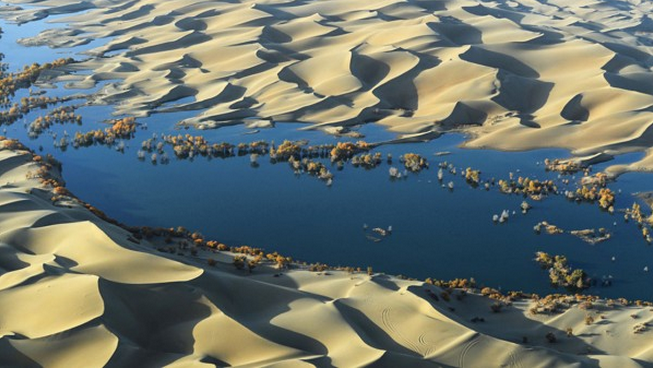Climate Change: Carbon Sink Discovered Beneath World's Deserts
2015-08-10
Climate Change: Carbon Sink Discovered Beneath World's Deserts

A carbon sink may be located beneath the world's deserts. Scientists have found that massive aquifers underneath deserts could hold more carbon than all of the plants on land. Scientists followed the journey of water through the Tarim Basin from the rivers at the edge of the valley to the desert aquifers under the basin. (Image by Yan Li)
Greenhouse gases are continuing to rise as more carbon dioxide is released through industrial processes and deforestation. About 40 percent of this carbon stays in the atmosphere, and roughly 30 percent enters the ocean. Although researchers thought the remainder was taken up by plants on land, new measurements reveal that plants don't absorb all of the leftover carbon. Now, researchers may have found out exactly where it ends up.
In this latest study, researchers examining the flow of water through a Chinese deserts found that carbon from the atmosphere was being absorbed by crops, released into the soil and then transported underground in groundwater. This process actually increased when farming entered the region about 2,000 years ago.
"The carbon is stored in these geological structures covered by thick layers of sand, and it may never return to the atmosphere," said Yan Li, lead author of the new study,
The new research estimates that because of agriculture, roughly 14 times more carbon than previously thought could be entering these underground desert aquifers each year. These underground pools, altogether, cover an area about the size of North America, and may account for a portion of the "missing" carbon sink.
The findings could help improve models that are used to predict future climate change. In addition, the new study could enhance calculations of the Earth's carbon budget, or the amount of fossil fuels that people can burn without causing major changes in the Earth's temperature.
The findings are published in the journal
Contact
LI Yan
Xinjiang Institute of Ecology and Geography, Chinese Academy of Sciences
E-mail: liyan@ms.xjb.ac.cn



